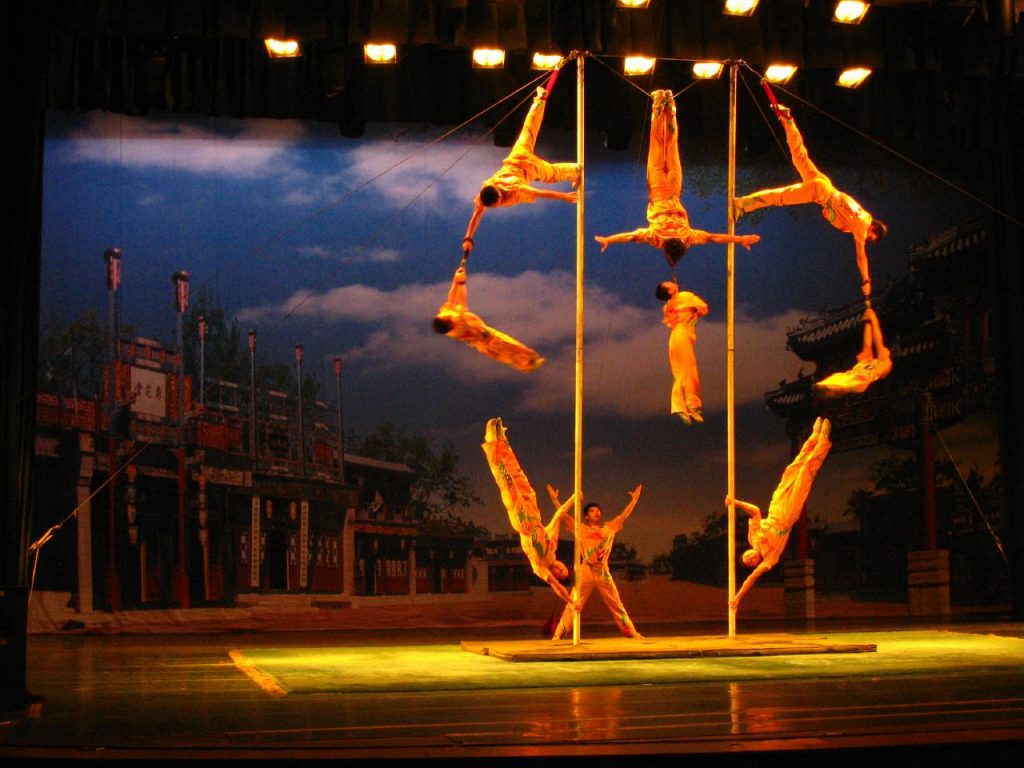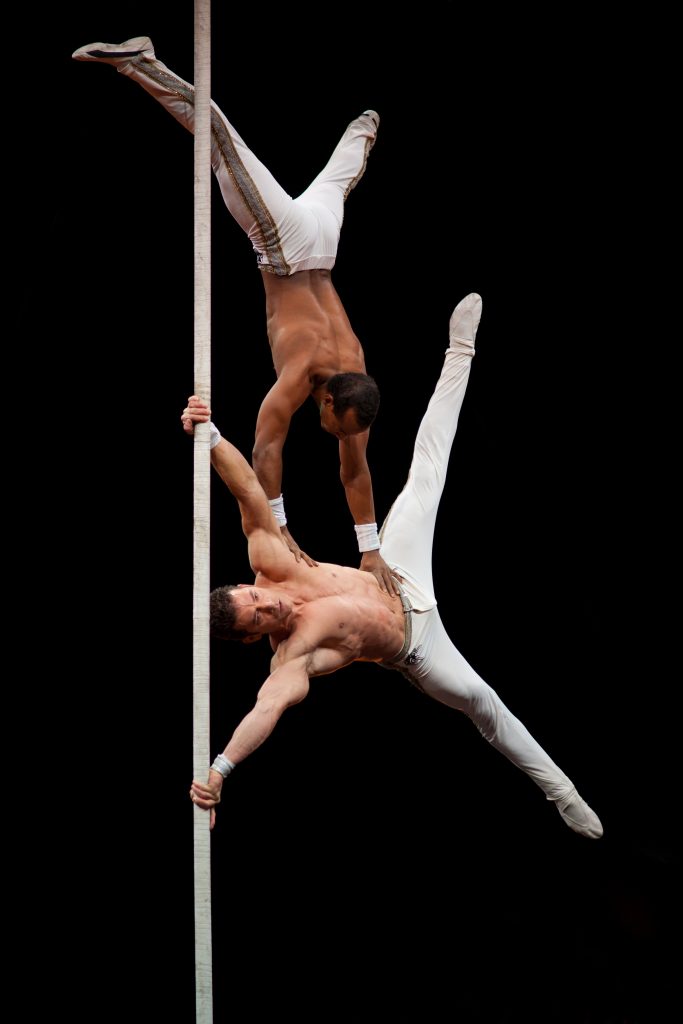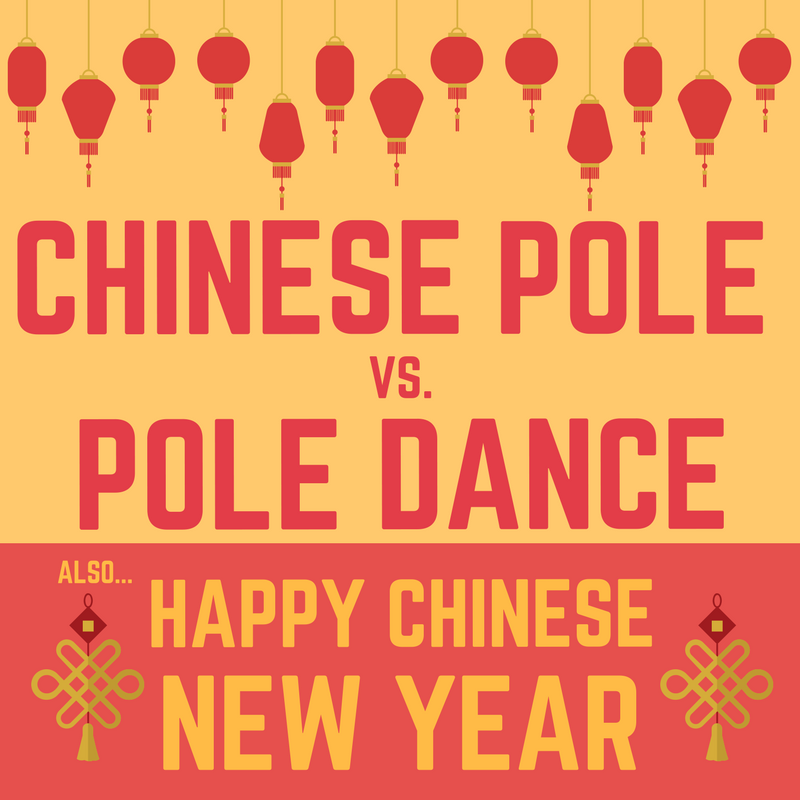Happy almost Chinese New Year! It’s getting to that time of the year, and if I were still in (high) school in Shanghai, I’d get a week-long break. Throooowback. But anyways, let’s talk Chinese pole.
No, it is not Chinese people pole dancing to Chinese music, because then I could do that.
Chinese pole is pretty much a super badass acrobatic sport and art that originated in China years ago. And by “years ago”, I mean over 2000 years. Pretty baller, yeah? As many art forms have spread across the globe, you could probably very easily find a place near you to try it out. Don’t want to try it out? Go watch a show! Cirque Du Soleil has done a really fantastic job of incorporating Chinese pole into their acts.
Now let’s get straight into the similarities and differences of Chinese pole and pole dance. We’ll go over:
- Equipment
- Attire
- Performance & Training
Equipment
Chinese Poles
Height: These poles typically extend from 9 (ish) to 30ft tall (3-10meters). The taller the pole extends, the more flexible they become. The height is what gives Chinese pole a back-and-forth wobble when acrobats are practicing and performing.
Diameter: Diameter ranges from 50-62mm. The smaller the diameter, the easier it is to grip.
Finish: The standard Chinese pole has a rubber material (typically neoprene) finish that is fused onto the base steel pole. Tape wrap is also used, but can be a bit more harsh on the skin. There is also an option for chrome finishes, but this finish is rare for Chinese pole acrobats.

https://commons.wikimedia.org/wiki/File:Chinese_Pole_Dance.jpg
Pole Dance Poles
Height: The height of pole dance poles are usually 9-13 feet, and is considerably shorter than Chinese poles. Because they are shorter than Chinese poles, they are “stiffer”.
Diameter: Dance pole diameters range from 42mm – 50mm, but 45mm is the most common. 45mm is also the diameter typically used in pole competitions. Same as Chinese pole, the smaller the diameter, the easier it is to grip.
Finish: Instead of the the usual rubber finish of Chinese poles, pole dance poles are usually finished with chrome, brass, powder coated, or silicone. You can also have a pure stainless steel pole. Depending on geographic location, climate, and humidity, each of these finishes will provide different grips abilities for the dancer. It’s important to note that silicone wraps and finishes are similar to the Chinese Pole’s rubber finish, but not seen as often in the pole world. This wrap simply allows you to pole if you want to wear long pants and long sleeves. We will discuss this more below.
Attire
Chinese Pole
Form fitted long sleeves and long pants are best for Chinese pole. In fact, doubling up on layers and even wearing jeans is not a bad idea. Without the length of pant bottoms and sleeves, acrobats would end up with even more severe rubber burns than they already do. Rubber burns are simply unavoidable.
Pole Dance
Pole dance is pretty much infamous for dancers’ lack of clothing. It’s not that we love wearing minimal clothing, but we need minimal clothing for our safety. On second thought…we do kind of love minimal clothing because there are SO many cute pole brands out there! Anyways. Tricking and flowing on the pole requires skin-to-metal contact in order to “stick”.
It’s kind of equivalent to frogs’ sticky finger pads and their abilities to climb up glass. Basically… if we wore long sleeves and pants, we would slip right off. As for pole dance with more floor work and flow, pants and long sleeves are actually better! Having clothing contact with the floor allows us to be gooey and smooth with our movement. Plus, it saves our knees.
But like Chinese pole, pole dancers alike will still get pole burn and bruises. Both kinds of pole are breeding grounds for bruises and burns we show off proudly.

https://en.wikipedia.org/wiki/Chinese_pole
Performance and Training
Chinese Pole
Chinese pole is heavily based on acrobatic ability and strength. The most popular move is the human flag, which takes an insane amount of training and practice. Chinese pole is also more of a male-dominated sport, although women do train and perform as well. It’s not as common, but it happens… and when it does happen…wowza.
Pole Dance
Unlike Chinese pole, pole dance is a fusion of dance, calisthenics, gymnastics, and basically anything you want to combine with it. Pole dance is a woman dominated sport, but it has been awesome seeing more men starting to pole! Pole dance, compared to Chinese pole has more of an artistic focus that allow people to bring in other movement backgrounds. Really, anything goes. You can read this post on how dance, gymnastics, figure skating and pole all relate to one another.
Generally speaking, pole dance focuses more on artistry, musicality, and flow, BUT it still requires tons and tons of strength and conditioning. In fact, cross training for both Chinese pole and pole dance would be extremely beneficial.
Blood (literally), sweat (literally), and tears (literally) are so involved in these types of pole sport…and because of that, both the acrobats and dancers are extremely epic, beastly, and badass.

1 comment
[…] into the history of pole dancing, the belief is that the sport was at least partly derived from Chinese pole. This is actually a male-dominated sport, although women do train and perform as well, […]